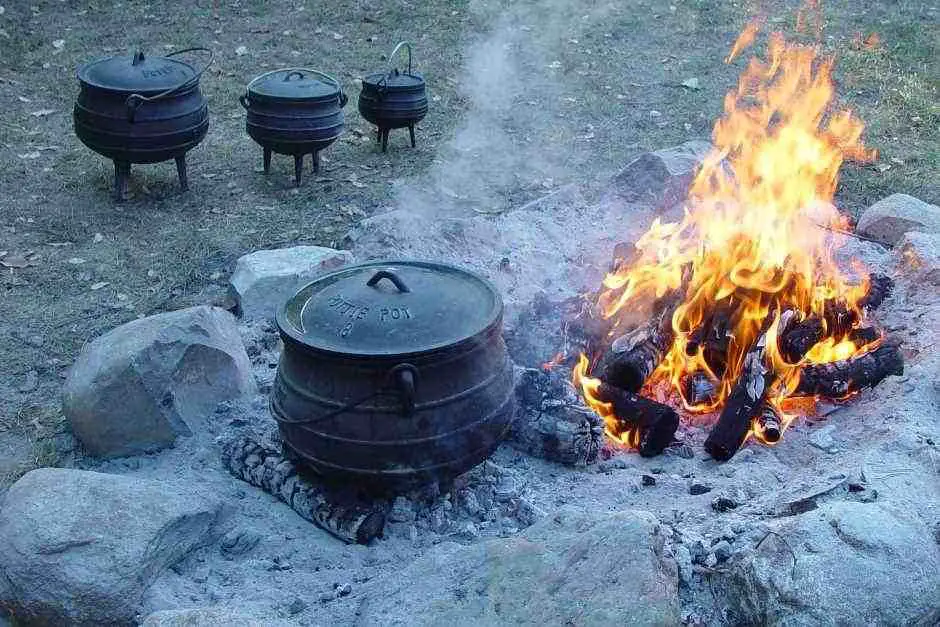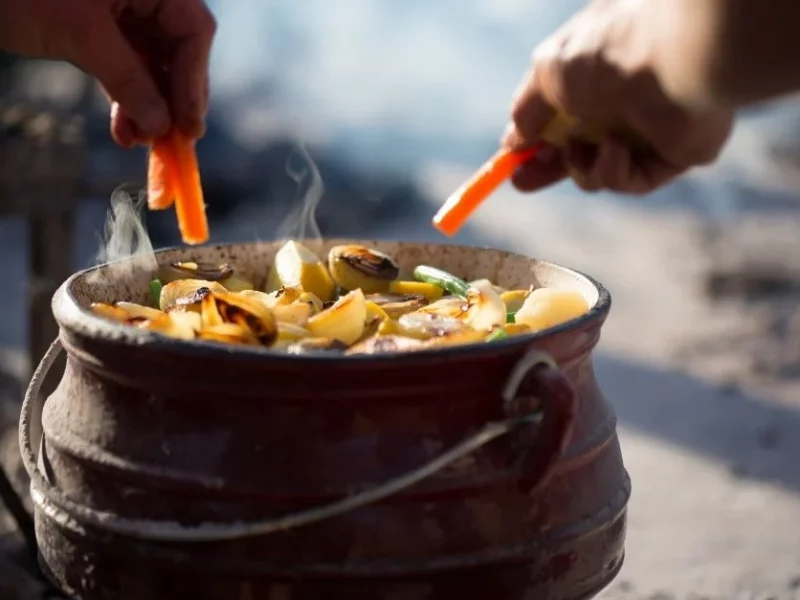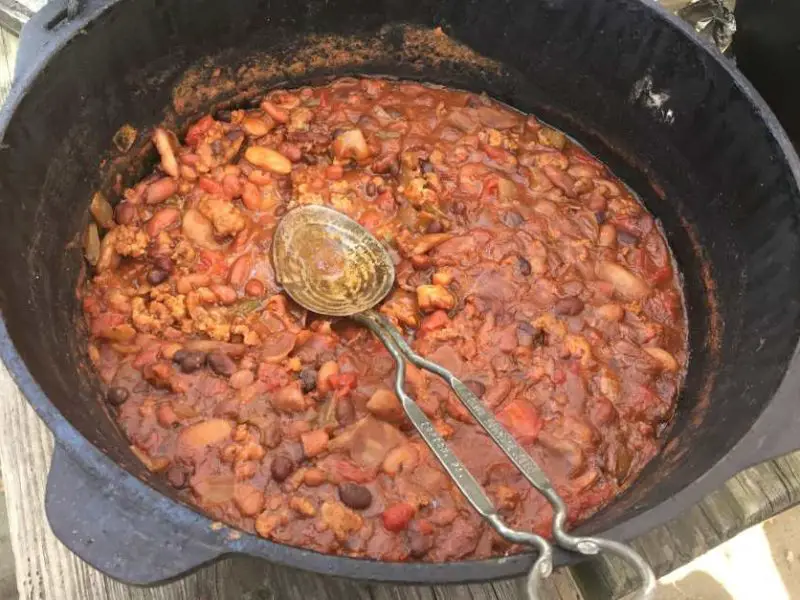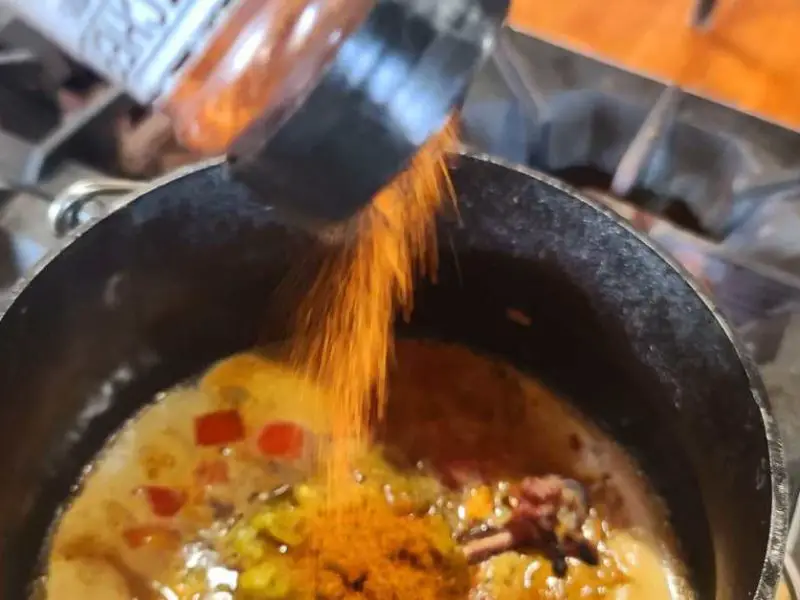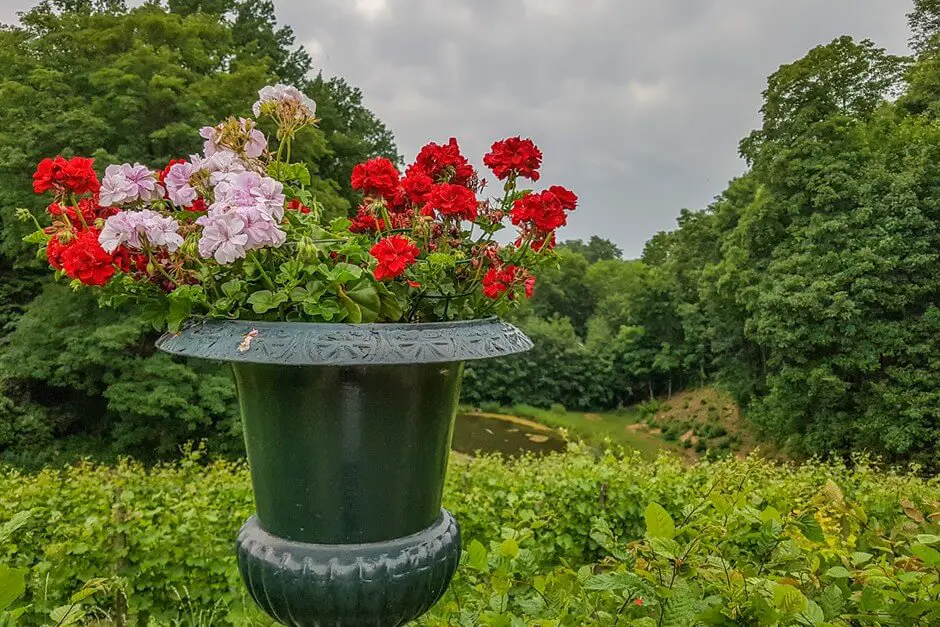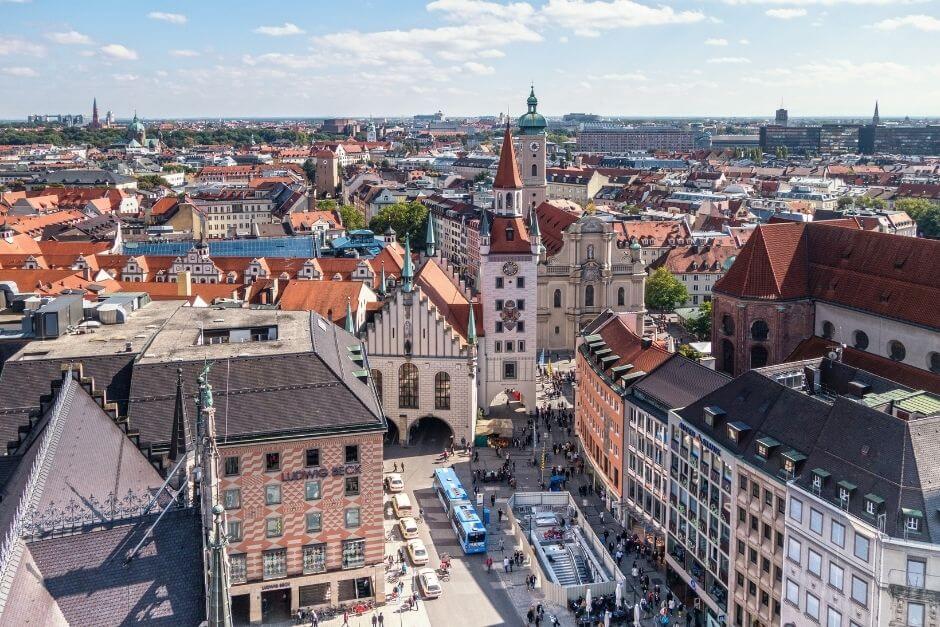Which Dutch oven size suits you best?
A Dutch oven is a versatile and essential part of every kitchen. From casseroles to bread baking to outdoor cooking, a Dutch oven offers endless possibilities. However, the right Dutch oven size is crucial to making the most of your cooking skills. Our Dutch oven size table helps with your purchasing decision. Discover the best Dutch ovens for beginners.
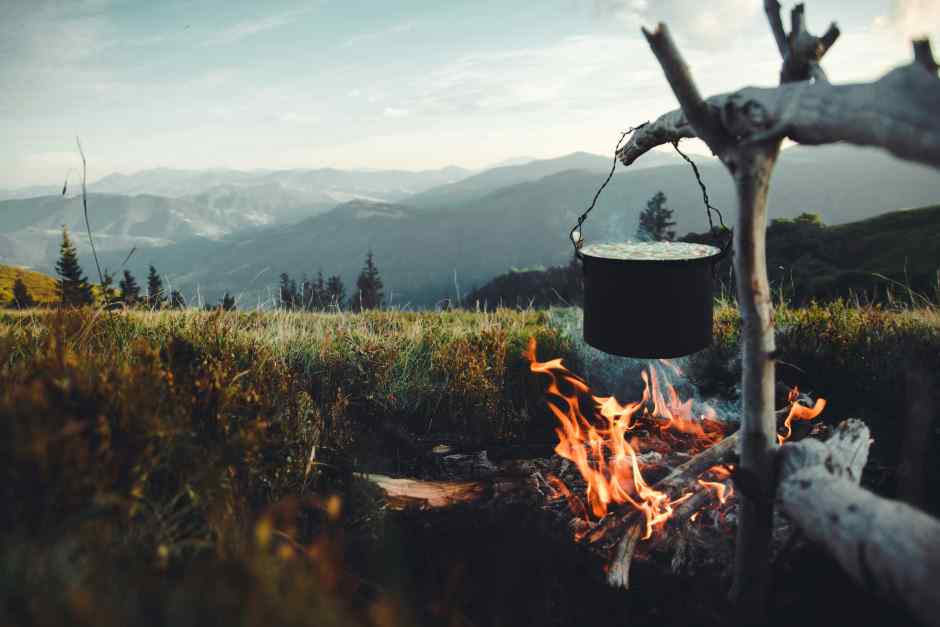
A Dutch oven is suitable for beginners and advanced users
Imagine sitting under the open sky, the stars twinkling above you, and the tempting smell of a freshly prepared stew wafting out of your Dutch oven. Doesn't that sound like a perfect evening camping? A Dutch oven can be your faithful companion on many adventures. But what exactly is a Dutch oven and how do you get started?
A Dutch oven is essentially a heavy, cast iron pot with a tight-fitting lid. It is ideal for cooking over an open fire or on embers. If you're just starting out, choose a Dutch oven with feet and a handle to make handling it over the fire easier.
To get started, we recommend simple recipes such as braised dishes or soups. They don't mind if the temperature isn't quite perfect. Advanced users can try bread or even cakes, which turn out surprisingly well in the Dutch oven.
Find the right Dutch oven sizes
If you regularly cook for a large family or like to prepare larger portions, a large Dutch oven with a capacity of 7-8 liters may be the best choice for you. This gives you enough space to prepare rich stews or juicy roasts.
For smaller households or for preparing side dishes and desserts, a smaller Dutch oven with a capacity of 3-4 liters might be sufficient. This size offers enough space for your favorite recipes without taking up too much space in the kitchen.
No matter what size you choose, a Dutch oven is a worthwhile investment.
Dutch Oven size table shows which Dutch Oven size fits
It's not that easy to buy the right Dutch oven. We were standing in the store and weren't sure about the size. The size chart saved us. A small Dutch oven is enough for two people. For larger groups we take the large one. It's important to consider the volume and the number of people. Since then it's always worked. Everyone finds the right size and everyone gets full. The Dutch oven size chart helps us every time.
If you like cooking outdoors, you're probably already familiar with these sturdy cast iron pots. But which Dutch oven size is right for you and your group? This Dutch oven size chart will help you choose the right Dutch oven for your needs. From this, you can work out how many people a 9-liter Dutch oven is enough for. Or find out how many people you can cook for in a 7-liter Dutch oven. Simply take the next highest quantity and adjust it to your needs.
Use our Dutch Oven size chart
A Dutch oven is an essential companion for anyone who loves cooking outdoors. But before you decide, you should consider how many people you usually cook for. The Dutch Oven Size Chart offers a variety of options to fit any group size.
Dutch Oven Size Comparison: Dutch Oven Size Table in Liter, ft or cm
When choosing a Dutch oven, the size in liters plays an important role. A model with six liters is often enough for a family. Smaller versions with three liters are good for couples. Larger Dutch ovens with ten or twelve liters are ideal for groups or large dishes. The right size depends on your own needs. If you like to cook for several people, you should go for a larger model. This way, every dish will be a success.
Adults |
Petromax Dutch
|
Liter |
Diameter |
| 1-2 native | ft1 / ft1-t | 1 liters | 6s = 15,24cm |
| 2-4 native | ft3 / ft3-t – ft 4.5 / ft 4.5-t | 2 liters | 8s = 20,32cm |
| 4-7 native | ft6 / ft6-t | 4 liters | 10s = 25,40cm |
| 8-14 native | ft9 / ft9-t | 6 liters | 12s = 30,48cm |
| 14-20 native | ft12 / ft12-t | 8 liters | 12 deep = 30,48 cm |
| 14-20 native | 8 liters | 14s = 35,56cm | |
| 20-28 native | ft18 / ft18-t | 10 liters | 14 deep = 35,56 cm |
| 20-28 native | 12 liters | 16s = 40,64cm |
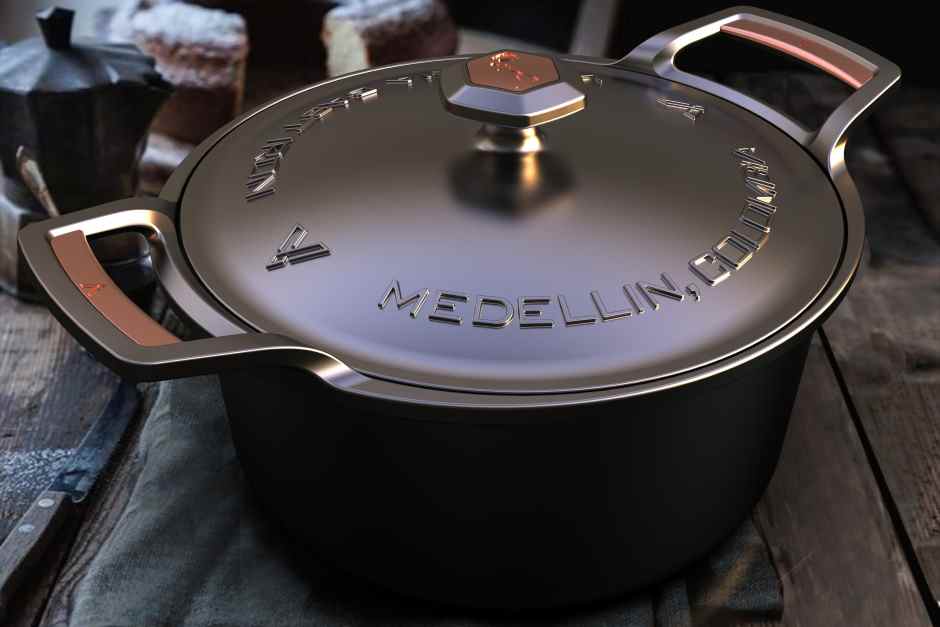
Buy Dutch Oven – Dutch Oven Size Comparison
Our tips will help you choose the right Dutch oven. Use our advice to make your decision.
Small Dutch Oven Size: Best Dutch Oven Size for Beginners
A small Dutch oven has its own advantages and disadvantages. On the one hand, it is compact and light, which makes handling easier. It takes up less space on the stove or in the oven. If you only occasionally prepare smaller portions or only cook for yourself, a small Dutch oven could be the right choice.
However, a small Dutch oven also has its limits. Limited capacity can make it difficult to prepare larger meals. If you like to cook for guests or need larger portions, consider a larger size.
These are dutch ovens for 2-4 people
For 2 people you usually need a Dutch Oven with a capacity of 1-2 liters. But what if there are three or four of you on the road? There are also suitable Dutch Oven sizes for this. A 3,6 liter pot is usually sufficient for three to four people. Here you can, for example, prepare a delicious chicken soup or a vegetable pan.
Order Dutch oven for 2-4 people here*
If you purchase via a link marked *, we receive a commission, which we use to run this blog.
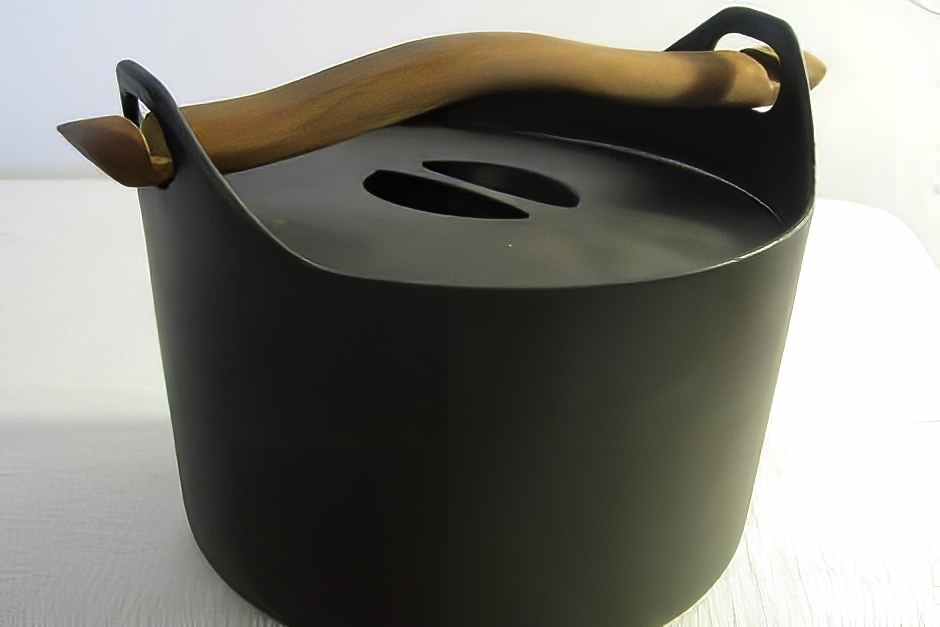
Medium Dutch Oven Size: Dutch Oven for Large Families
A medium Dutch oven offers a good balance between capacity and handling. With a capacity of 5-6 liters, it is ideal for average households or if you like to cook larger portions. It offers enough space for stews, roasts and other hearty dishes.
One downside to a medium Dutch oven is that it can still be a bit bulky. It takes up more space than a small Dutch oven and can be a bit cumbersome to carry around. If you have a smaller workspace or like to cook in small kitchens, this is something to consider.
You can find Dutch ovens for 4 – 7 people here
Dutch Ovens with a capacity of 4 liters or more are suitable for 7-4 people. If you are cooking for four to seven people, a 6 liter Dutch oven will do just fine. Here you can, for example, prepare a delicious stew or conjure up a crispy crust of bread.
Order Dutch oven for 4-7 people here*
If you purchase via a link marked *, we receive a commission, which we use to run this blog.
A Dutch oven for 8-14 people
You can feed 8 – 14 people in a Dutch Oven that holds at least 6 liters. Of course there are also larger Dutch Ovens for large groups or if you like to cook in advance. But keep in mind that a large pot is also heavier and bulkier. It is important that you can transport and set up the pot safely.
Order Dutch oven for 8-14 people here*
If you purchase via a link marked *, we receive a commission, which we use to run this blog.
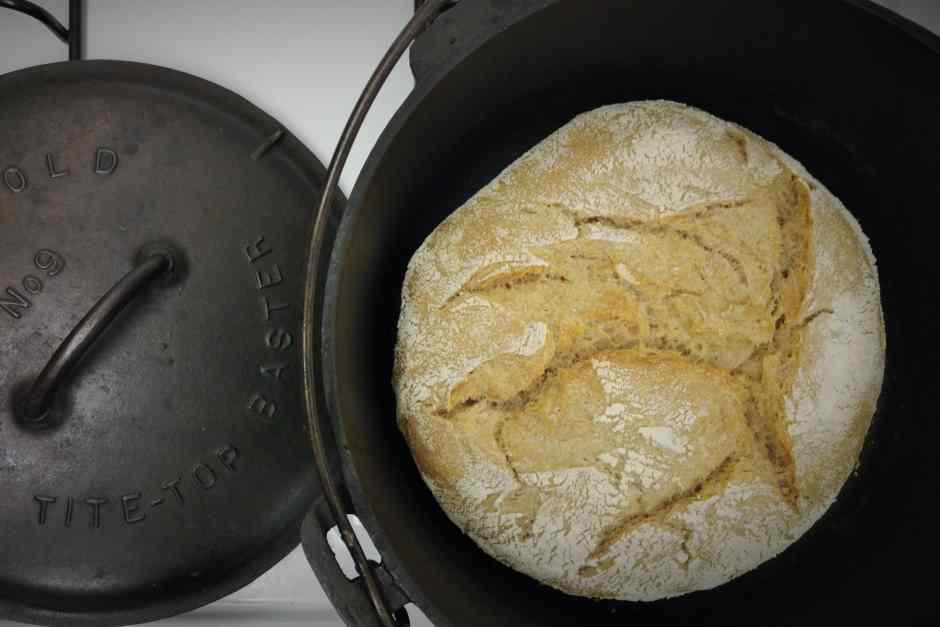
Large Dutch Oven Size: Pros and Cons
A large Dutch oven with a capacity of 7-8 liters might be the best choice for you if you regularly cook for a large family or want to prepare larger portions. This gives you enough space to prepare rich stews or juicy roasts.
However, there are also some disadvantages to using a large Dutch oven. For one thing, it is heavy and bulky, which can be a bit inconvenient to carry around and store. Due to its size, it also requires more space on the stove or in the oven.
Another advantage of a large Dutch oven is the even heat distribution, which enables perfect cooking performance. The thick wall of the pot ensures slow and even heating, which is ideal for braising meat or making soup.
These Dutch ovens are suitable for 14 – 20 people
You can prepare dishes for 14 - 20 people in these Dutch Ovens that hold between 8 and 10 liters.
Order Dutch oven for 14-20 people here*
If you purchase via a link marked *, we receive a commission, which we use to run this blog.
Largest Dutch oven for 20 – 28 people
You can serve 20 - 28 people with a Dutch oven that holds 10 to 12 liters. Such large models are ideal for large groups or events such as family gatherings, camping trips with several people or outdoor catering.
Order Dutch oven for 20-28 people here*
If you purchase via a link marked *, we receive a commission, which we use to run this blog.
Your Dutch oven for gas grill
Dutch Oven sizes with a foot are particularly suitable for cooking over a campfire or on an open grill fire. For the Gas grill we recommend Dutch Oven without feet instead. Here you will find a selection:
Order a Dutch oven for the gas grill here*
If you purchase via a link marked *, we receive a commission, which we use to run this blog.
Choosing the right Dutch oven size for your needs
Choosing the right size of Dutch oven depends on your individual needs and preferences.
If you regularly cook for a large family or larger groups, a large Dutch oven with a capacity of 7-8 liters or more is the best choice. You have enough space to prepare rich stews, soups or large roasts.
If you live in a small household or only occasionally prepare smaller portions, a small Dutch oven with a capacity of 3-4 liters might be sufficient. It offers enough space for your favorite recipes without taking up too much space in the kitchen.
For average households and if you like to prepare larger portions, a medium Dutch oven with a capacity of 5-6 liters is a good choice. It offers enough space for stews, roasts and other hearty dishes.
No matter what size you choose, a Dutch oven is a worthwhile investment. Discover your perfect Dutch oven and experience a new dimension of cooking.
Top tips from professional chef Amy Hand for using a Dutch oven

“My top tip is to keep your Dutch oven well-seasoned. This will prevent too much iron from leaching into your food after prolonged periods on the fire and make the surface semi-nonstick.
Another tip for cooking with a Dutch oven is to avoid opening the lid too often. The whole idea of a Dutch oven is to create an oven-like environment that can sit on the fire. Frequently opening the lid will let all the trapped heat escape, meaning your dish will take longer to cook.”
Amy Hand is from Cape Town South Africa. She was first a dessert chef and later a head chef at a taco restaurant. However, she prefers to cook at home with the Dutch oven. Today she publishes her cooking tips in, among other places The Skillful Cook.
My experiences with a Dutch oven
I had my first experience cooking in a Dutch oven during my adventures traveling through South Africa. We always traveled with groups of up to 25 people and had a special campsite near Plettenberg Bay right by the sea. We had a free day there in our travel program. While the tour participants were having fun on the beach, we often spent the day preparing one Potjiekos. This is a typical South African dish made from various vegetables and meat. These were added to the pot throughout the day depending on the cooking time and simmered throughout the day campfire. When our guests returned from their activities on the beach in the evening, the hot vegetable stew was already waiting for them. Preparing a potjieko is time-consuming, but you can also prepare fresh sourdough bread in a Dutch oven, for example. This tastes delicious.
You can also find Dutch oven accessories
A Dutch oven is robust and can withstand great heat. Even so, a fiery furnace must be properly cared for. You can find out how in our Guide to cleaning and caring for a Dutch Oven. Otherwise the dish will burn quickly in the oven. Especially with large Dutch Oven sizes, you should make sure that the entire pot is treated. You also need tools to be able to use the Dutch Oven on the grill.
You can order Dutch oven accessories here
You can find our detailed selection of Dutch oven accessories here.
Cooking with a Dutch oven is not just about the pot itself. The right accessories make the difference. A lid lifter is essential to safely lift the hot lid. A tripod is also handy, especially if you cook outdoors. It keeps the Dutch oven stable over the fire. For those who want to do it themselves, there are instructions for building accessories such as tripods or lid holders.
Another tip is a temperature gauge. This allows you to closely monitor the heat in the pot. If you grill often, check out specialty BBQ accessory sets. Brands like Petromax or Weber offer a wide range of accessories that you can also find online on Amazon or in hardware stores like OBI. A well-stocked kit often also includes gloves to protect you from the heat and cleaning supplies to care for your Dutch oven.
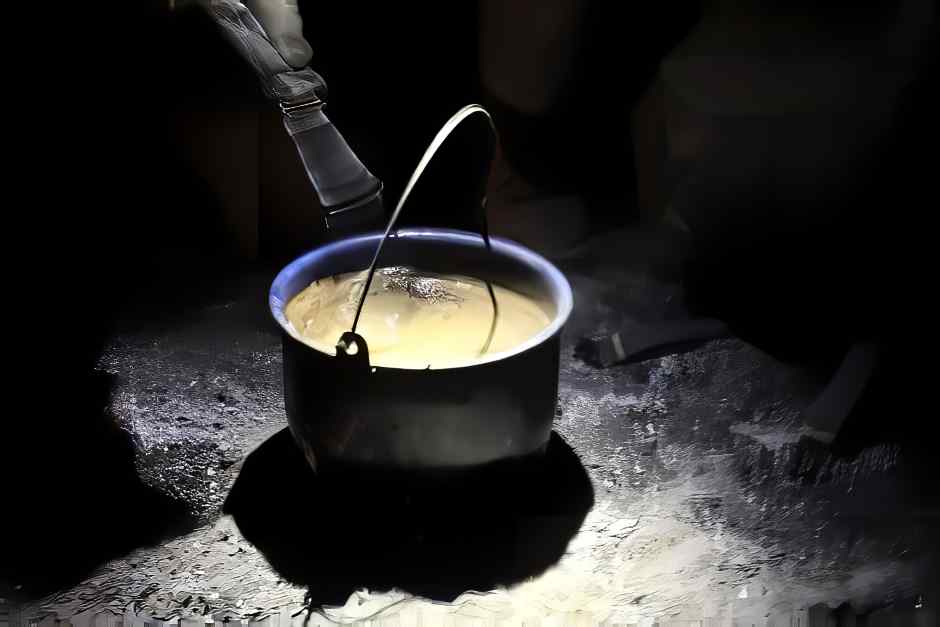
Benefits of Cooking with a Dutch Oven
Cooking with a Dutch oven offers many advantages. One of the biggest advantages is versatility. A Dutch oven can be used on the stove, in the oven, or even outdoors. You can use it to fry, braise, bake, steam and much more. It is truly an all-in-one cooking tool.
Another advantage is the even heat distribution. The thick walls and heavy lid of a Dutch oven ensure that the heat is distributed evenly and your food cooks perfectly. This is particularly important when braising meat, as the slow and gentle preparation produces tender and juicy results.
In addition, a Dutch oven is extremely durable and robust. It can last for years and remains in good condition despite frequent use. A high-quality Dutch oven is a worthwhile investment.
Understanding Dutch Oven Sizes
Before deciding on the right size Dutch oven, it's important to understand the different size options.
Small Dutch ovens usually have a capacity of 3-4 liters. This size is ideal for smaller households or if you want to prepare side dishes and desserts. They offer enough space for your favorite recipes without taking up too much space in the kitchen.
Medium Dutch ovens usually have a capacity of 5-6 liters. This size is well suited for average households and allows larger portions to be prepared. They offer enough space for stews, roasts and other hearty dishes.
Large Dutch ovens have a capacity of 7-8 liters or even more. This size is ideal if you regularly cook for a large family or larger groups. They offer enough space for rich stews, soups or large roasts.
Calculate the size of a Dutch Oven.
The size of a Dutch oven is usually given in inches, which corresponds to 2,54 cm. To get the diameter in centimeters, simply multiply the inch by 2,54. The weight of a Dutch oven is usually between 75 and 85 percent of the diameter in kilograms. For example, a 12 inch Dutch Oven usually weighs between 9 and 10 kg.
Understand the dimensions and shapes of the Dutch oven.
Dutch Ovens come in a variety of sizes and shapes, from small 1 liter sizes to large 8 liter ovens. Our Dutch Oven size table above definitely helps with orientation. Larger pots are definitely better for family-sized meals and can even hold multiple dishes at once. In addition, Dutch Ovens come in round or oval shapes, depending on your cooking needs. It's important to also consider the dimensions of the pot when making your selection, as you'll need to store it when not in use.
The Dutch Oven sizes from Petromax.
Find a large selection of Petromax* offers Dutch oven accessories (Advertisement). The Petromax Dutch Ovens are available in different sizes, from 1,1 to 12 liters. If you want to cook for six people, I recommend an 8 liter Dutch oven. This means you have enough space for a large portion of chili con carne or goulash. The ft6 and ft9 models, for example, are good for getting started as they offer enough space for a hearty meal for four to 14 people. You can also use them on all types of stoves and in the oven. The lid of the pot can even be used as a pan.
Order Dutch Oven from Petromax here*
If you purchase via a link marked *, we receive a commission, which we use to run this blog.
However, if you want to cook for a larger group, you should take a look at the ft12 or ft18 Dutch Oven, for example. These are ideal for large dishes. But the ft4.5 is also good for multiple gears. On the other hand, if you only cook for yourself, then the ft1 and ft3 Dutch Ovens are a great option. These are compact and easy to transport, but still offer enough space for one portion. The lid can also be used as a pan here, which is very practical.
Order Dutch oven accessories from Petromax here*
If you purchase via a link marked *, we receive a commission, which we use to run this blog.
Consider your cooking needs when choosing the right Dutch oven size.
When choosing a Dutch oven, consider your cooking needs and what type of recipes you will be making. If you only want to prepare smaller dishes such as soups and stews, a 1-2 liter pot is sufficient. On the other hand, if you want to feed more people or prepare larger meals, you may need to choose a 4-6 quart Dutch oven. Ultimately, the choice is personal and depends on how much food you want to prepare and serve.
Pay attention to the weight of your Dutch Oven.
The weight of your Dutch Oven affects how easy it is to use and move. Lighter 6-8 liter Dutch ovens can be quite heavy, but metal handles make them easier to lift and move than heavier models. If weight is an issue for you, consider purchasing a smaller, lighter model in the 2-4 liter range. In this case, however, keep in mind that this choice can limit the recipes and dishes that you can prepare.
Look for benefits like lids or clips of different sizes.
Different sized Dutch Ovens can come with different lid options or clamps to hold the contents more securely. This can be beneficial when cooking meals like soups and stews where the lid needs to fit snugly to ensure the heat stays in. Also check whether when purchasing your device additional Accessories is included, as this can help even further.
Read reviews before purchasing your Dutch oven sizes.
Before you buy a Dutch Oven, always look for real feedback from other customers. Read reviews of different Dutch Ovens on sites like Amazon and check the ratings to make sure the size you buy is well received. Also, ask professional chefs or bakers for advice on the best size for ease of use and quality. They can also often give you an accurate opinion on the most popular Dutch ovens.
Tips for caring for and storing your Dutch oven
Not only is the Dutch oven size important, the care and storage of your Dutch oven also play a big role. A well-maintained Dutch oven lasts a lifetime. Make sure to clean it thoroughly after each use and store it in a dry place. This way you avoid rust and maintain the quality of your cookware.
Interested in more tips on caring for and storing Dutch ovens? Then take a look at our detailed article on this topic. There you will find out everything you need to know to keep your Dutch oven in top shape.
You can find Dutch Oven recipes here
With a Dutch Oven you can prepare a variety of dishes, from meat dishes to vegetarian options.
Easy Dutch Oven Recipes for Beginners
If you're new to the world of Dutch ovens, start with simple recipes. How about a hearty stew? You only need a few basic ingredients like potatoes, vegetables and meat. Everything goes into the Dutch Oven and is cooked over the embers or the fire.
Vegetarian variety
There are also numerous options for vegetarians. Try a potato and vegetable curry. It is not only delicious but also healthy. And best of all: You can prepare it directly in the Dutch Oven.
Dutch oven recipes for meat lovers
For the meat fans among you, there are of course many options. How about a juicy pot roast or a chicken curry? The possibilities are endless.
Seasonal highlights
In summer, light dishes such as fish or vegetable pans are suitable. In winter you can enjoy hearty stews and stews.
For the whole family
Dutch Oven recipes are ideal if you are cooking for many people. You can easily prepare large quantities and everyone will be full.
In any case, we wish you a lot of fun with your Dutch Oven sizes Enjoy outdoors. You can find recipes for your Dutch Oven, for example, in our Collection of Dutch Oven recipes. More tips about Cooking and baking in the mobile home and when camping you can also find here.
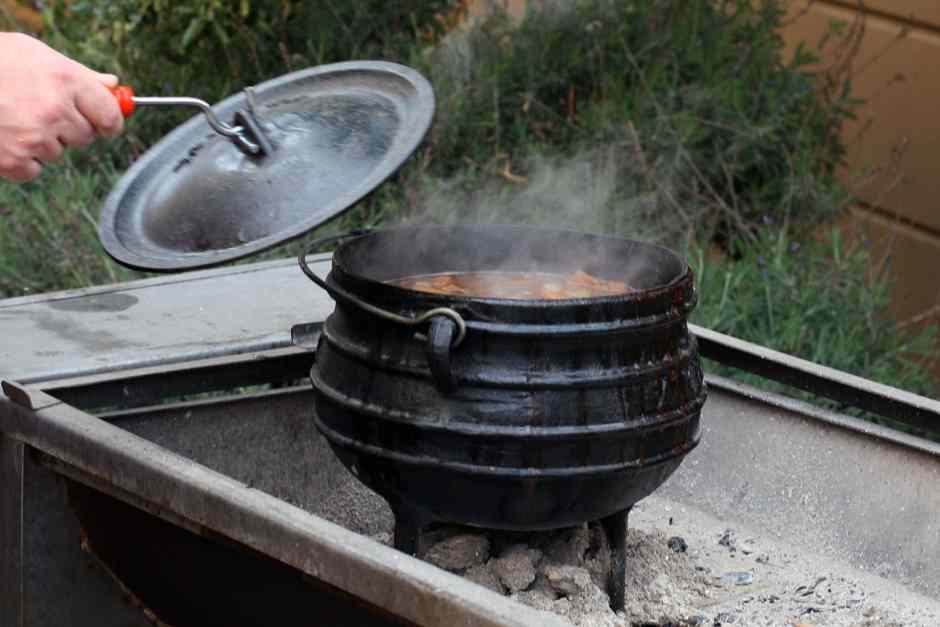
Questions and answers about the Dutch Oven sizes
Dutch Oven what size should I buy?
>Outdoor enjoyment includes cooking outside. A Dutch oven pot is suitable for many types of outdoor cooking. You can cook with such a pot on a gas grill, on a portable grill and over an open fire. Some even use it in the oven. However, the fire oven is primarily used in the outdoor kitchen. The pioneers in the Wild West of the USA, on the gold rivers in the Yukon and the Voortrekkers in South Africa used the cast iron oven during their long treks overland. The latter cooked their potjiekos in it, among other things. It has now found its way into the outdoor kitchen. You can cook with the Dutch oven on the terrace as well as on a motorhome trip or around the campfire if you are traveling in a car with a roof tent. If you want to buy a cast iron pot, you first need to know which pot sizes are right for you. Our Dutch oven size table will help you decide.
A Dutch Oven 3,6 liters is enough for how many people?
With a Dutch oven of this size, you can cook dishes for four to seven people.
A Dutch Oven 9 liters is enough for how many people?
With a Dutch Oven that holds 9 liters, you can cook for up to 20 people.
What is the smallest Dutch oven I can buy?
The smallest Dutch oven usually has a capacity of 1,5 liters and a diameter of around 20 cm.
What size is best for a family?
A Dutch oven with a capacity of 4,5 to 6 liters and a diameter of 30 to 35 cm is recommended for a family.
Can I also use a Dutch Oven on a camping stove?
Yes, most Dutch Ovens can also be used on a camping stove or gas stove. However, note the size and weight to ensure stability.
What is the biggest potje on the market?
Most manufacturers offer Dutch ovens with a capacity of up to 12 liters and a diameter of around 40 cm.
Are there differences in the height of the Dutch Oven models?
Yes, the height may vary depending on the model. Some are flatter and wider, while others are taller and narrower. It depends on the shape and capacity of the Dutch Oven.
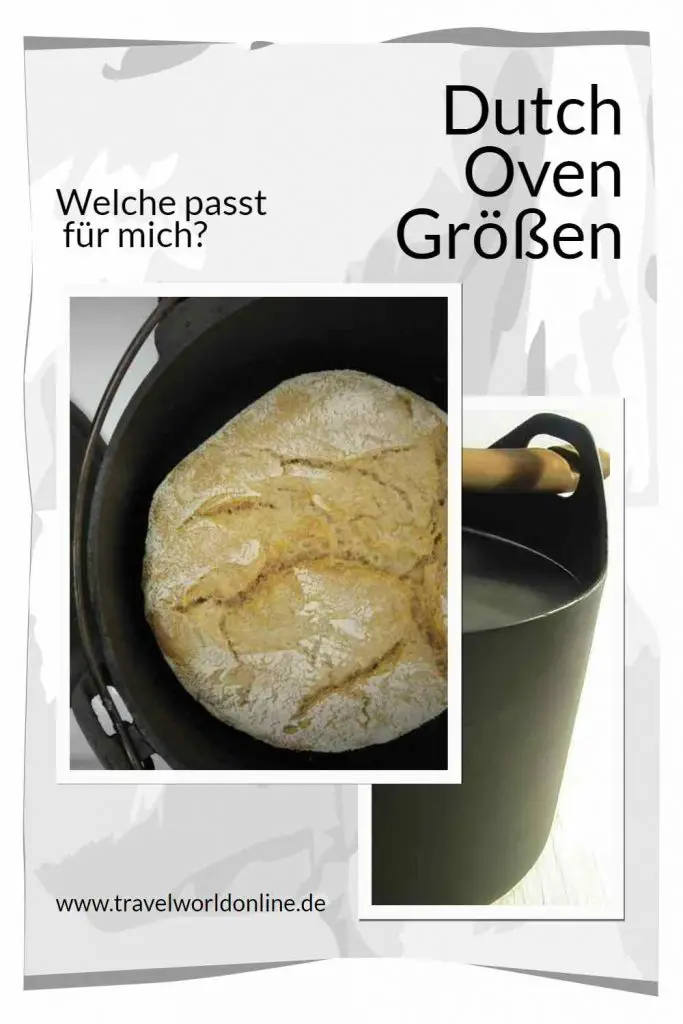
Do you know this?
- Guide to Camping Accessories: RV, Tent and Outdoor
- How does a dutch oven work?
- One pot recipes for camping and houseboat
- Grilling tips for connoisseurs
- Gas grill accessories - why is it worth it?
- Grill Spare Ribs with a Rib Marinade
- camping lamps
- packing list for campers
- E-bike folding bike for camping
- Camping accessories store
- Cool box for camping
Source Dutch oven size table: own research and experiences on camping trips. Our opinions definitely remain our own.
Text Dutch Oven size table: © Copyright Monika Fuchs and TravelWorldOnline
Photos Dutch oven size table: © Copyright Wikimedia (public domain), Unsplash and Flickr (Warren, CC BY SA 2.0 DEED)
Video Dutch oven size table: © Copyright Petar Fuchs and TravelWorldOnline
